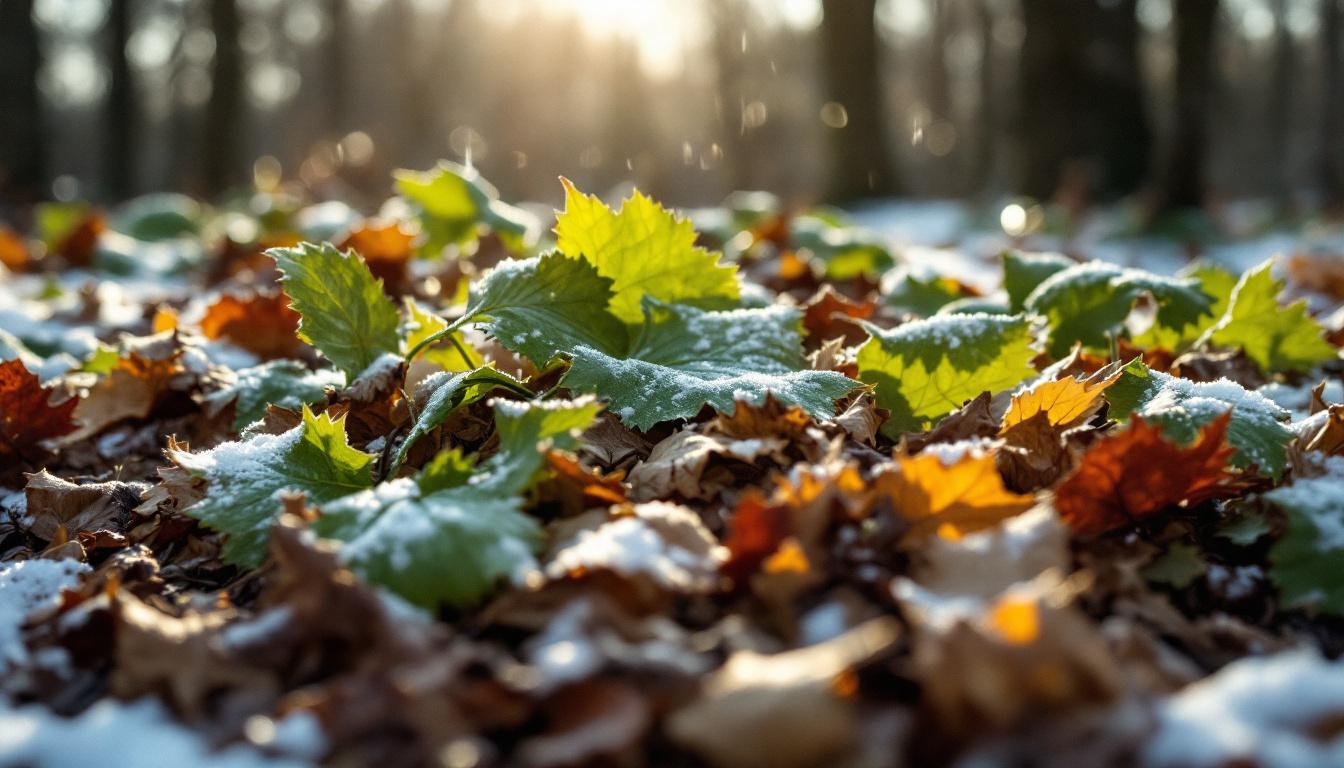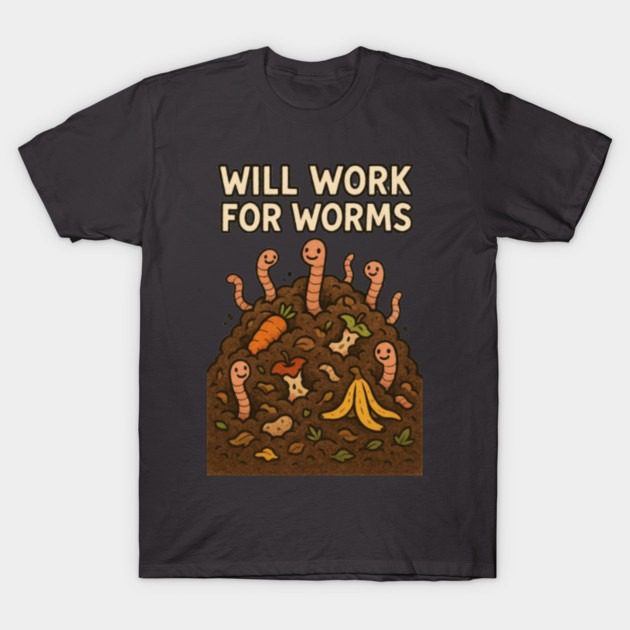Key Takeaways:
- Composting leaves over winter is an easy way to recycle garden waste and get rich compost for spring.
- Winter composting slows down but doesn’t stop, thanks to helpful microbes working in cooler weather.
- Choosing the right method, like a compost tumbler or vermicomposting, keeps your bin active and safe for kids and pets.
- Insulating your pile with leaves, straw, or cardboard helps it stay warmer and break down material more efficiently.
- Troubleshooting is simple with the right steps, and common mistakes are easy to fix.
Simple Steps for Nutritious Compost All Year
Ready to turn your fall leaves into garden gold this winter? Let’s dig in. When the temperature drops and most gardens rest, composting leaves over winter keeps the cycle going.
Simply put, composting is nature’s way of turning old leaves and kitchen scraps into nutritious soil.
It matters because it cuts down waste, saves money, and helps your garden thrive come spring.
Even in the cold months, compost tumbler bins and vermicomposting make it easy to keep breaking down material. Microbes and earthworms keep working, just a bit slower than in summer.
You’ll find composting leaves over winter is one of the simplest ways to recycle autumn’s pile-up, protect your compost from freezing, and build rich soil for the growing season.
Whether you use a basic heap, a covered bin, or a compost tumbler, starting now means less waste and better gardens later.
If you’re curious about smart ways to warm up your bin or want tips on keeping worms happy through frosty nights, visit our seasonal composting calendar for advice that works year-round.
Key takeaways:
- Composting leaves over winter recycles garden waste and builds healthier soil.
- Compost, composting, vermicomposting, and compost tumblers make the process easy and accessible.
- Even in cold weather, decomposition continues with a little support—meaning your compost pile never truly rests.
The Science and Benefits of Composting Leaves Over Winter
 Photo by David Dibert
Photo by David Dibert
Composting leaves over winter is a simple act with big payoffs. Not only does it help cut down garden waste, but it also creates rich compost that powers your spring garden.
Let’s take a look at why winter composting matters and how cold weather changes the composting process.
Why Composting Leaves Matters in Winter
Each autumn, piles of leaves collect in gardens and along neighborhoods.
It might be tempting to bag them up for the landfill, but composting those leaves over winter does a world of good—for you and the planet.
- Saves resources: Turning leaves into compost at home cuts down the trash sent to landfill, keeping your local environment less cluttered and reducing waste collection costs.
- Boosts soil health: Leaf compost adds valuable nutrients and organic matter, giving spring plants a head start with nutrient-rich earth.
- Fights climate change: Composting reduces methane, a harmful greenhouse gas that forms when organic matter rots in landfills.
- Encourages sustainable living: Every batch of homemade compost from fallen leaves is one less plastic bag needed for waste.
Switching from tossing to composting leaves is an easy way to make a real change at home. Want more inspiration for keeping garden waste out of the landfill?
Check out the Don’t Toss It Campaign for fun ideas and stories about making every leaf count.
How Composting Works in Cold Weather
When temperatures drop, microbes—the tiny life forms that break down leaves and kitchen scraps—start to take things slow.
You might picture compost buzzing with action in summer, but during winter, everything from bacteria to earthworms enters low gear.
Here’s what shifts for your compost pile in winter:
- Microbe activity slows: Cool weather causes the microbes responsible for decomposition to move slower, so leaves break down at a gentler pace.
- Heat loss is real: The center of a compost pile can stay warmer than the air outside, but frequent turning or a small pile size can let heat escape, making it even harder for microbes to work.
- Pile insulation is key: To keep your composting leaves over winter breaking down, insulate your pile. Use extra autumn leaves, layers of straw, or cardboard over the top and sides to help hold in warmth.
- Moisture management: Cold weather means less evaporation, so check moisture levels to avoid a soggy pile.
The science isn’t complicated—you can still compost, vermicompost, or use a compost tumbler through the frosty months.
It just takes a small shift in approach. If you’re looking for seasonal tricks, the seasonal composting calendar offers month-by-month advice for winter composting success.
For even more winter-specific tips, the article “Composting in Winter: Essential Tips for a Thriving Garden” breaks down ways to adapt your setup, from boosting compost with kitchen scraps to preventing your bin from freezing up.
Key takeaways:
- Composting leaves over winter is good for the soil, your wallet, and the planet.
- Microbial activity in compost slows in cold weather, but with insulation and a little patience, you’ll still see decomposition.
- There are simple seasonal steps you can take to help your compost pile work all year long.
Getting Started: How to Compost Leaves Over Winter
A pile of leaves in winter might look like a mess, but with a little help, you can turn those frosty layers into rich compost that’s ready by spring.
Composting leaves over winter is all about choosing a method that fits your space (and patience), prepping your pile before it freezes, and paying close attention to temperature and moisture.
Let’s break down the best ways to keep your compost thriving through the cold months.
Choosing the Right Composting Method for Winter
 Photo by Eva Bronzini
Photo by Eva Bronzini
Choosing the right method is the first step to success when composting leaves over winter.
Not all composting processes handle cold weather the same way, so it helps to compare a few key methods:
- Traditional Compost Bin
- Pros: Simple, inexpensive, holds large piles of leaves, great for slow composting.
- Cons: Slow breakdown in winter, needs careful insulation, may freeze solid.
- Vermicomposting (using worms)
- Pros: Fast composting even in small spaces, works indoors, no smelly pile if done right.
- Cons: Worms need protection from freezing, special care and setup, not great for huge leaf piles.
- Compost Tumblers
- Pros: Easy to turn, keeps pests out, retains more heat than piles, can process leaves faster.
- Cons: Limited space, can be pricey, needs regular spinning to keep material mixed.
For many, a compost tumbler offers a tidy, quick way to keep composting moving when temperatures drop. Tumblers also help keep your yard neat and children or pets safe.
If you want a head start on which tumbler is right for you, the Compost Tumbler Guide covers top models, setup tips, and size advice.
Some gardeners also experiment with sheet mulching, where leaves are layered directly over garden beds. It’s a simple “cold composting” method described in Ten things to remember about composting during the winter, which works great for hands-off folks.
Setting Up and Maintaining Your Winter Compost Pile
A little planning before the first frost means your leaf pile will compost all winter long. Here’s a step-by-step list:
- Gather Leaves: Shred leaves if you can. Smaller pieces break down much faster and don’t mat together.
- Start Layering: Alternate brown (leaves) and green (fruit scraps, veggie peelings, coffee grounds) materials. This mix feeds the composting microbes.
- Insulate the Pile: Heap extra leaves, straw, or cardboard over and around your pile. Insulation keeps warmth in and freezing air out. Piles at least 3 feet tall hold heat best.
- Aerate for Air: Use a fork or aerator rod to poke holes into the pile when you add new materials. Airflow is important, but in very cold weather, limit turning to avoid losing built-up heat. For most of winter, avoid turning the pile unless it’s warm outside.
- Check Moisture: Your compost should feel like a wrung-out sponge. If it’s dry, sprinkle with water. If it’s wet, add more leaves or cardboard to soak up the extra.
Covering your compost with straw or a tarp protects the pile from rain and snow, keeping conditions just right for microbes to keep working.
For more help on getting started, the Beginner’s guide to composting breaks down these basics into easy steps.
Extra tips for winter composting are in Winter Composting, like choosing the right sized bin and keeping the pile active even on frosty days.
Vermicomposting and Worm Care in Cold Months
Worms can work wonders in winter, but they’re picky about temperature.
Red wigglers—the top composting worms—don’t like to freeze, so some special care is needed.
- Keep Bins Warm: Move worm bins inside the garage, basement, or anywhere above freezing. Bury bins at ground level and wrap them with old blankets if they must stay outside.
- Insulate Well: Tap into household insulation; use straw, shredded paper, or foam board around your bin.
- Don’t Overfeed: Worms eat less in the cold. Too much food leads to rot and odors.
- Avoid Overwatering: Damp but not soaking is best. Too much moisture and cold equals worm trouble.
- Common Mistakes:
- Leaving bins outside unprotected.
- Letting the bedding freeze solid.
- Ignoring signs of stress (worms try to escape a freezing or too-wet bin).
If you want to compost indoors and skip the outdoor chills, vermicomposting is your best bet.
For a full rundown of how to keep worms cozy, Winter Vermicomposting: How to Keep a Worm Bin Warm gives quick, practical advice for beginners and experienced worm keepers.
You can also check out in-depth tips for composting with worms through winter in the Compost Charm methods guide, covering what to feed your bin and how to stop problems before they start.
Key Takeaways:
- Pick a method (traditional bin, vermicomposting, or compost tumbler) that fits your space and needs.
- Prep your pile with insulation, layering, and the right mix of “brown” and “green” materials.
- Turning the pile is helpful, but in deep cold, cut back on stirring to keep heat in.
- Vermicomposting lets you compost indoors, but worms need frost-free protection.
- Mistakes like overfeeding or under-insulating are easy to avoid with a little care.
Starting now, you’ll find composting leaves over winter is a simple, satisfying way to shrink your waste pile and boost your garden for spring.
Troubleshooting Common Winter Composting Issues
Composting leaves over winter brings some unique challenges, but most issues are easy to handle once you know what to look for.
Cold snaps, freezing piles, funky smells, and uninvited critters can all pop up. With a few key tricks, you can keep your compost pile humming along, even when there’s frost on the ground.
Dealing with Frozen or Slow Compost
When winter bites, your compost might slow to a crawl or even freeze solid. Here’s how you can spot and fix these chilly issues:
- How to Know Your Pile Is Struggling:
If you notice the pile has stopped shrinking, you’re still seeing whole leaves weeks later, or it feels icy in the center, it’s probably frozen or just moving really slowly. - What to Do if the Pile Freezes:
A frozen pile isn’t ruined; it’s just paused. Microbes and worms might take a winter break, but they’ll get back to work when temps rise.
Here’s what you can do:- Add insulation: Heap on more dry leaves, straw, or even an old blanket to keep things warmer.
- Avoid turning the pile during deep freezes: Turning can release heat. Only turn if it’s a milder day outside.
- Don’t worry about kitchen scraps: They’ll wait in the cold—it won’t hurt your compost if they freeze for a while.
- Check moisture, but don’t water a frozen pile: Wait for a thaw before adjusting water levels.
- How to Restart in Warmer Weather:
Once temps climb above freezing, your pile becomes active again.- Gently fluff up the top layers—this brings in fresh air and helps microbes wake up.
- Add a handful of fresh kitchen scraps or even a scoop of finished compost if you have it.
- Once thawed, resume occasional turning to mix things up and encourage heating.
If progress stays slow, your mix might be low on “green” materials. Combining some veggie scraps or coffee grounds helps quicken the action.
A good winter compost tumbler makes turning and insulating easier, and tips for year-round action are covered in the seasonal composting calendar, so your pile never needs to sit idle all season.
For more details on why piles freeze and how to bring them back to life, check out these top compost troubleshooting tips.
It’s packed with simple advice that works for backyard bins and tumblers alike.
Preventing Smells and Pests
Nobody wants a smelly bin or surprise visitors digging through the pile.
While composting leaves over winter, you might notice smells get worse or critters show up, especially if scraps aren’t breaking down quickly. Here are some smart ways to keep your bin fresh and critter-free:
- Keep Smells Away:
- Always balance “greens” (like food scraps) with “browns” (like leaves). Too many scraps lead to rot and stink.
- Mix the pile every few weeks on mild days to add air. Microbes need oxygen to work, and mixing helps avoid an “off” smell.
- If your compost starts to smell like rotten eggs, it’s a sign things are too wet or packed tight. Add more leaves or shredded cardboard to soak up the moisture and help air move through.
- Cover fresh kitchen scraps with a thick layer of leaves each time you add them.
- Use a compost tumbler with a secure lid for extra odor control.
- Stop Pests Before They Start:
- Don’t put meat, dairy, or oily food in your pile. These foods attract animals and create bad smells.
- If you spot rodents or raccoons, wrap fresh scraps in leaves and bury them deep in the pile.
- Use bins or tumblers with tight-fitting lids.
- For outdoor piles, surround your heap with a layer of wire mesh to block larger pests.
For a deep dive into stopping compost smells, you’ll find great solutions at Compost Magazine’s guide to stopping compost bins from smelling.
Simple steps, like adding straw or sawdust, can keep things fresh without any fuss.
If you’d like bonus ideas on how to build a healthy composting setup, check out the Compost Charm resource on six practical composting methods.
It covers everything from pest-proofing to troubleshooting your mix—handy for both first-timers and seasoned composters.
Key Takeaways:
- Frozen or slow winter compost is normal—just keep things insulated and be patient until spring.
- Odors signal problems with moisture or air, and they’re easy to fix with more leaves or occasional mixing.
- Keep your compost pest-free by avoiding meat and dairy, using secure lids, and following the brown-to-green balance.
- Handy resources like the seasonal composting calendar and composting methods guide offer extra support year-round.
Summary, Key Takeaways, and Composting FAQ
Composting leaves over winter is a simple way to help your garden and the planet, even when everything looks frozen on the surface.
With a little preparation and the right methods, you can turn piles of crunchy fall leaves into rich, garden-ready compost by spring.
Whether you use a compost tumbler, try vermicomposting indoors, or set up a basic outdoor pile, the process is accessible for all ages and spaces.
A few smart steps in autumn and regular checks through winter keep things humming.
The rewards? Less landfill waste, a smaller carbon footprint, and beautiful, healthy soil to kick off the next growing season.
Key Takeaways
Let’s break down the most important points for anyone starting out with composting leaves over winter:
- Composting keeps going in cold weather. Microbes work all year, just more slowly in the cold, so patience matters.
- Shredding leaves speeds things up. Smaller pieces mean faster breakdown and healthier compost.
- Balance is important. Mix “brown” leaves with “green” kitchen scraps for best results.
- Insulate your pile. Covering with extra leaves, straw, or cardboard helps hold warmth, letting microbes keep working.
- Don’t overthink it. Even if your pile freezes, the process pauses, not stops. It will restart as soon as things warm up.
- Compost tumblers and vermicomposting are great winter options. They keep things tidy, quick, and safe for the whole family.
- Pest control and odor management are easy. Stick to plant-based scraps, avoid meats and dairy, and always top with leaves.
- Sustainable living is simple. Composting is an easy habit with a big impact for you, your community, and future gardens.
For more practical tips on getting your pile started at home, have a look at this beginner-friendly how-to guide on composting.
Looking for extra tricks to boost your compost pile as the temperature dips?
Shredding leaves before adding them, as explained in this complete guide to composting leaves, keeps your composting process efficient even in chilly months.
Check out this great Compost Tee at our Teepublic Store
Composting FAQ
Curious minds have plenty of questions about composting leaves over winter, from the basics to the nitty-gritty.
Here are answers to the ones we hear most often:
Q: Does composting really work in winter, or should I wait for spring? A: Composting never really stops. Microbes keep breaking things down, even in the cold, though they slow down. Your pile might freeze if it gets really cold, but as soon as it thaws, the process picks up right where it left off.
Q: How do I keep my compost from getting too wet in winter? A: Cover your pile with a tarp or extra dry leaves to block excess rain and snow. Your compost should feel like a wrung-out sponge—not soggy, not dry.
Q: Can I add fresh kitchen scraps all winter? A: Yes, but cover each addition with a thick layer of leaves or browns. This helps keep smells down and discourages pests.
Q: Do I need to turn my compost pile in winter? A: It’s good to turn your pile every few weeks if it’s not frozen, but don’t turn it in deep cold as that can let out precious warmth.
Q: Are compost tumblers or worm bins better than open piles in winter? A: Compost tumblers are easier to insulate and turn, making them a top choice for winter composting. Vermicomposting (using worms) works well indoors, as worms need frost-free spots to keep munching away.
Q: Should I shred my leaves before composting? A: Absolutely. Shredded leaves break down much faster and help air move through the pile.
Q: Why does my compost smell bad in cold weather? A: Too many scraps and not enough leaves, or too little air, can cause odors. Add more browns, mix gently on mild days, and make sure your pile isn’t soggy.
Q: What if I get stuck or have a question that isn’t answered here? A: Composting is full of surprises. If you need help, ask the Composting FAQ Bot for instant, friendly advice whenever you hit a snag.
For some extra winter-specific tips, check out these ten important reminders about winter composting. These tips show that compost piles can keep steaming away, even on snowiest days.
 Photo by Chait Goli
Photo by Chait Goli






nice information and good article thank you
You are very welcome.